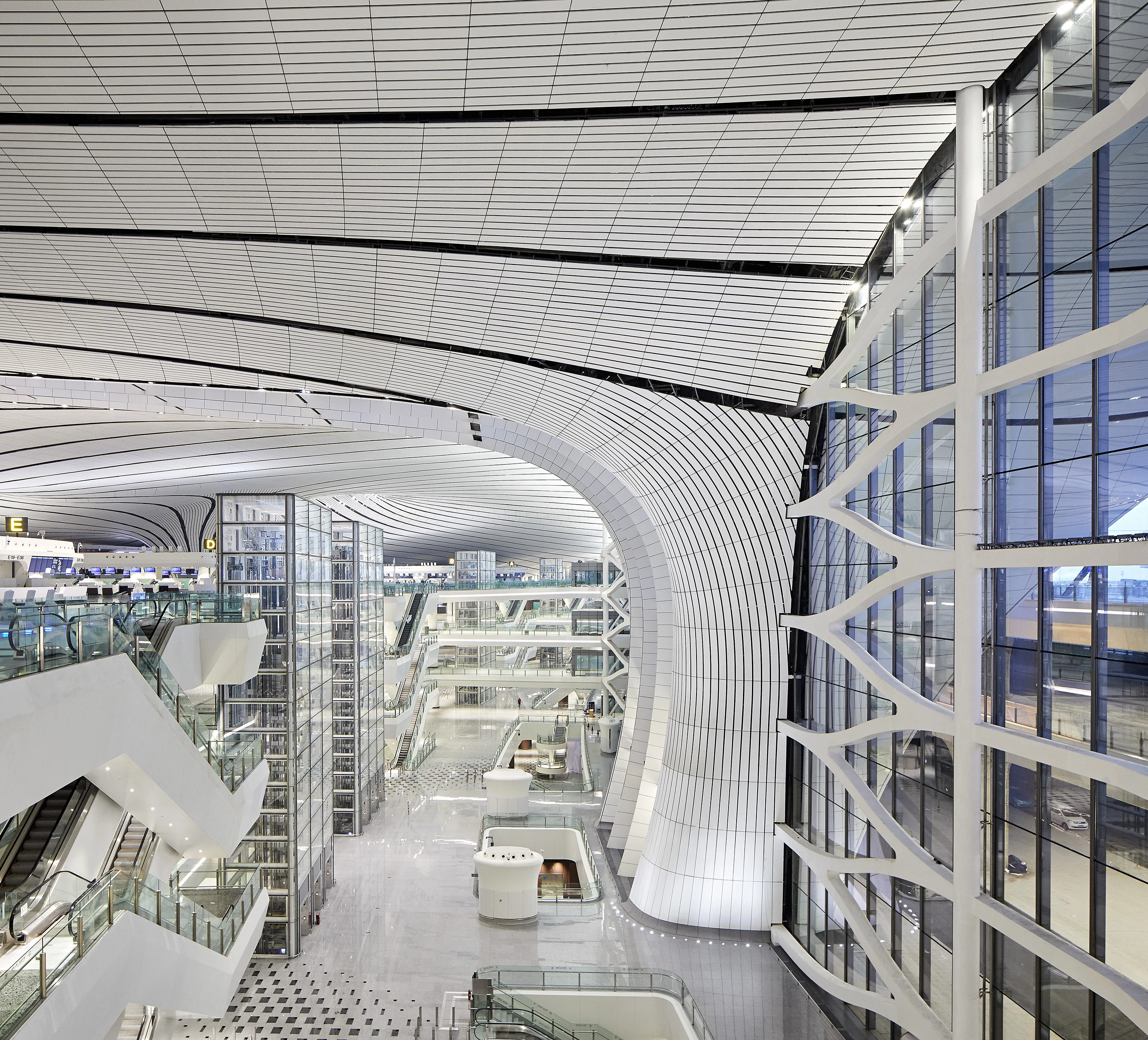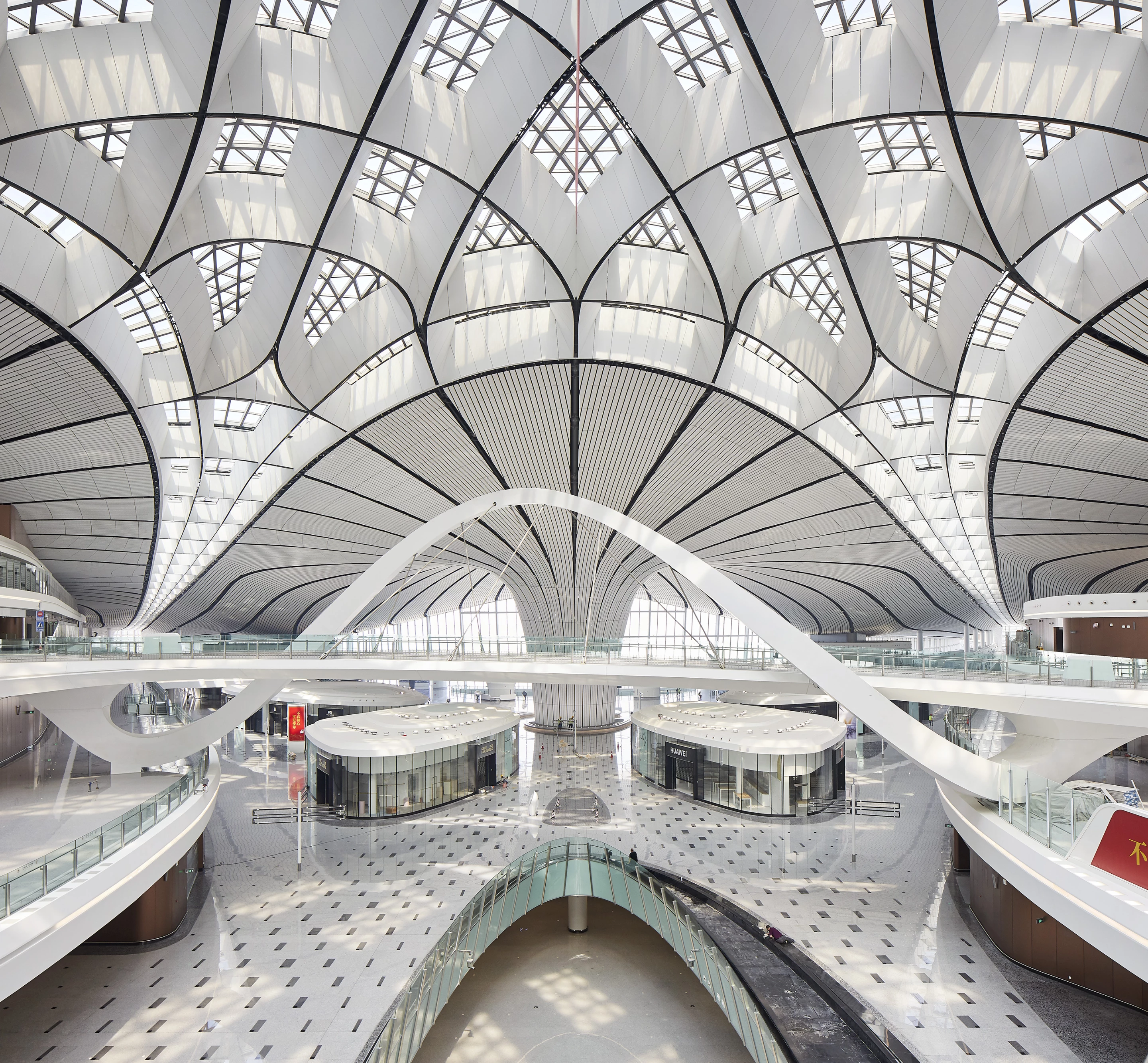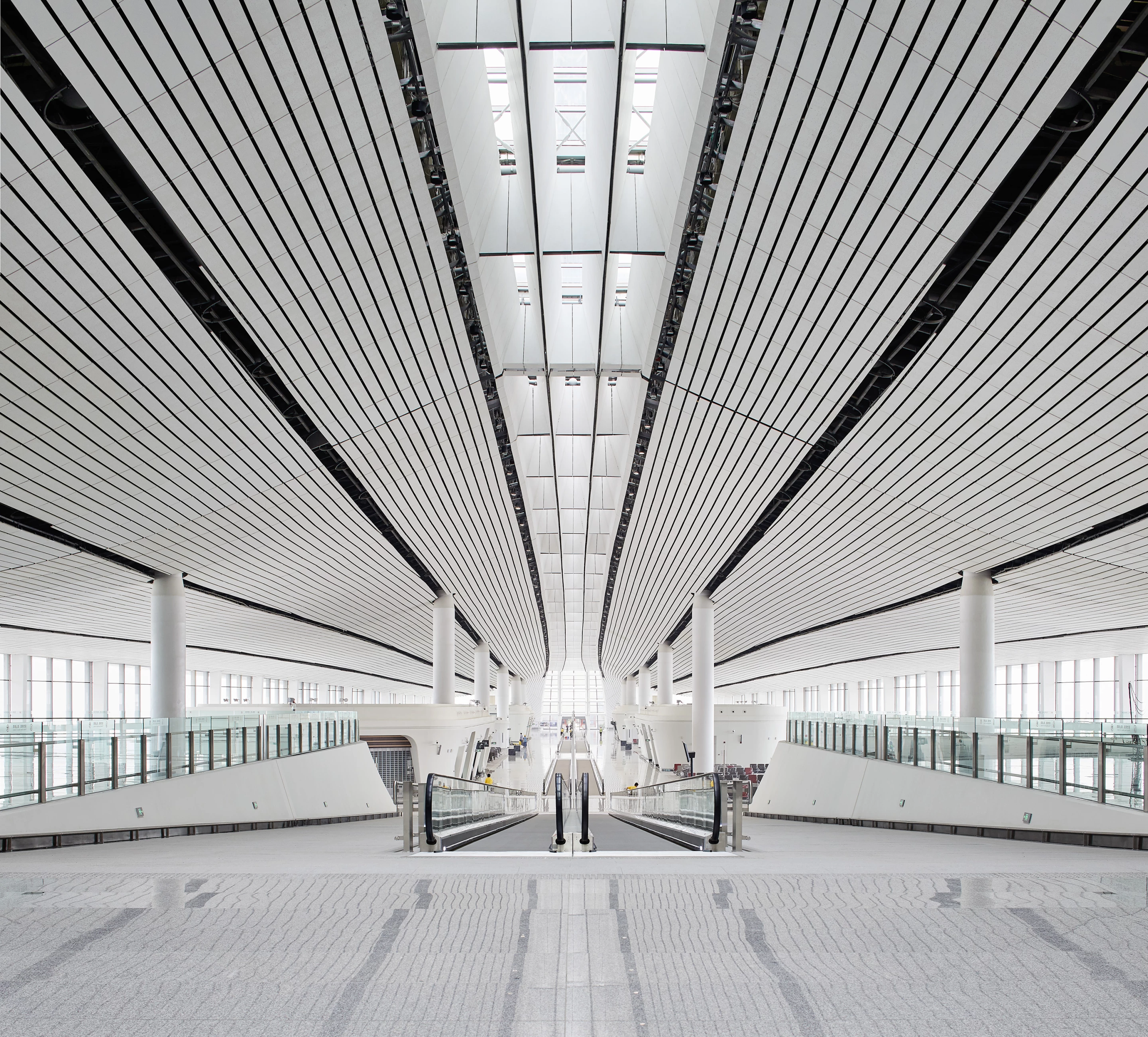Resembling some kind of strange alien starfish, the massive Beijing Daxing International Airport is one of Zaha Hadid Architects' most eye-catching buildings to date. The airport features a significant amount of sustainable technology too, including solar power and rainwater collection systems.
Beijing Daxing International Airport was created in collaboration with ADP Ingénierie and China Airport Construction Company. According to The Guardian, it cost 450 billion Yuan (roughly US$63 billion) to construct.
The airport is centered around the world's largest single building terminal, and has 700,000 sq m (roughly 7.5 million sq ft) of floorspace. To put its size into perspective, it's about nine times larger than England's Buckingham Palace and roughly three and a half times the size of China's Forbidden City.
Initially, it will serve 45 million passengers per year but this is expected to increase to 72 million by 2025, eventually expanding up to a maximum of 100 million at some point in the future.
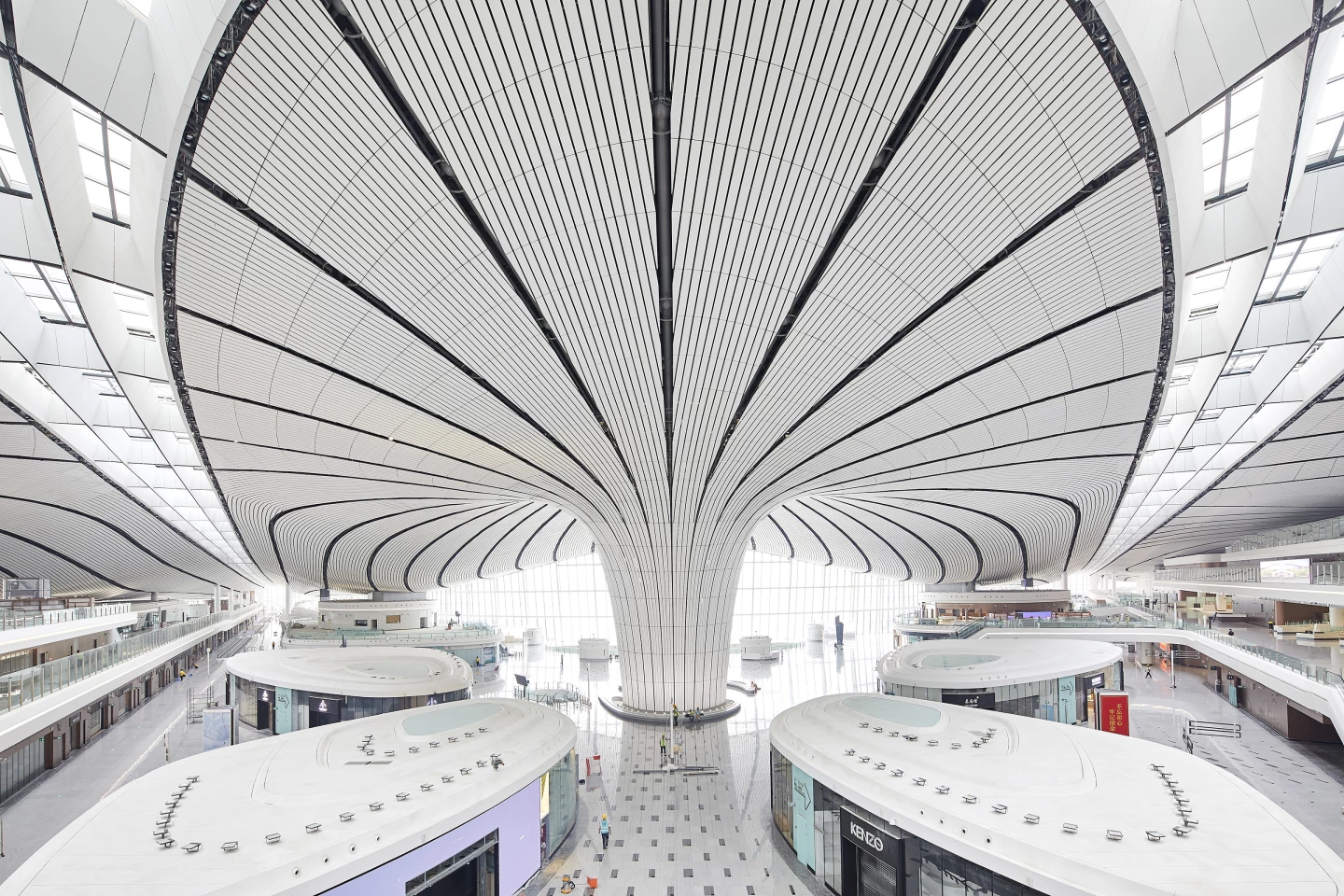
There's something rather Gigeresque about Beijing Daxing International Airport's overall design, though according to ZHA, its inspiration hails from much closer to home and echoes traditional Chinese architecture that organizes interconnected spaces around a central courtyard. The design also has a practical focus and increases natural light inside and aims to make it easy to access the gates and other areas.
"The compact radial design of the terminal allows a maximum number of aircraft to be parked directly at the terminal with minimum distances from the center of the building, providing exceptional convenience for passengers and flexibility in operations," says ZHA. "79 gates with airbridges connect directly to the terminal which can rapidly process the passengers of six full A380 aircraft simultaneously. "
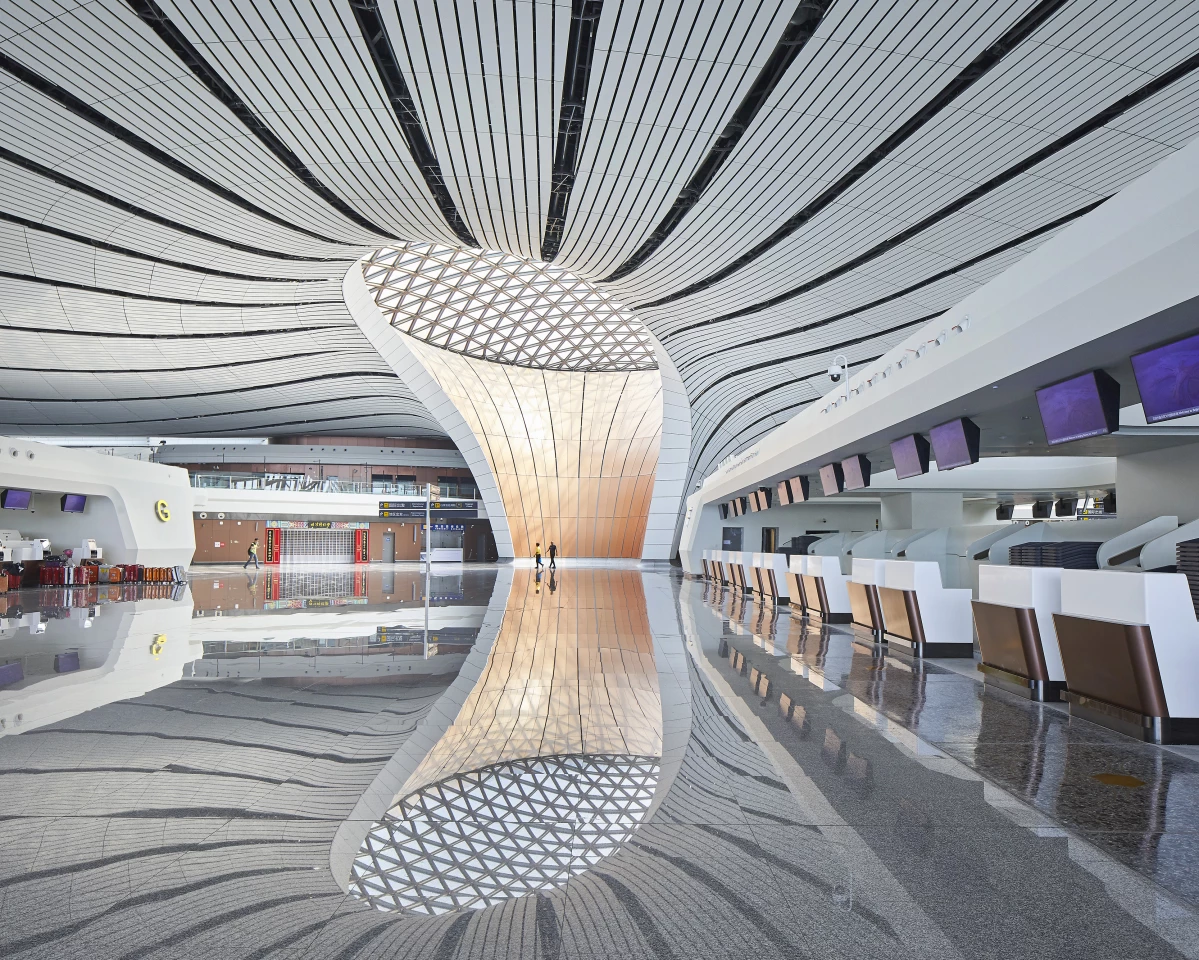
Solar panels provide over 10 MW of electricity and the airport's heating comes from an efficient ground-source heat pump system. It also features a huge rainwater collection and management system that manages the storage and purification of 2.8 million cubic m (98 million cubic ft) of water in a series of wetlands, lakes, and streams, which were created to prevent flooding and mitigate any heat island effects.
Beijing Daxing International Airport was inaugurated by Chinese Premier Xi Jinping in time for the country's National Day celebrations on October 1, which marks 70 years of the People's Republic of China.
Source: Zaha Hadid Architects



